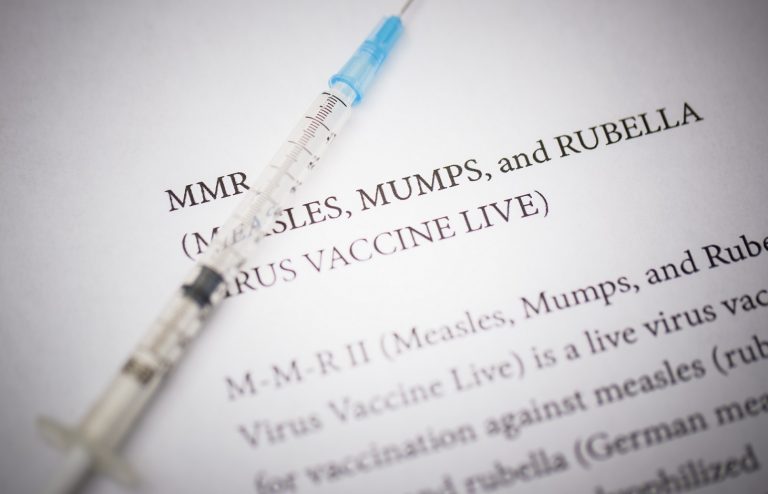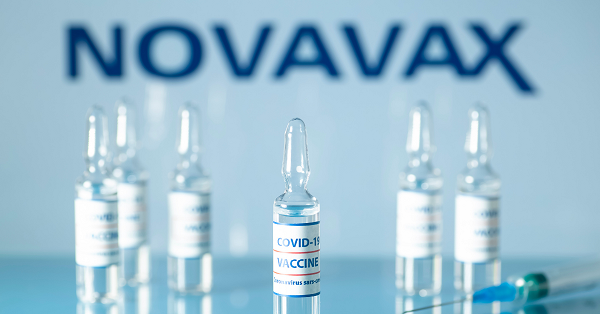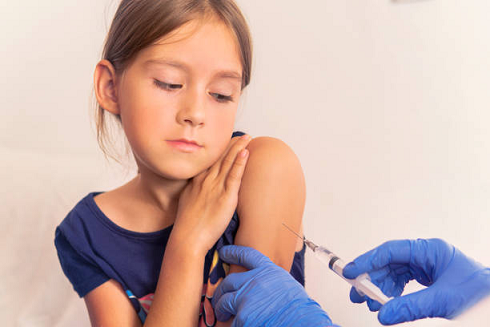The MMR vaccine study recently published by Hviid et al. (2019, Annals of Internal Medicine)1 entitled, “Measles, Mumps, Rubella Vaccination and Autism: A Nationwide Cohort Study,” leaves many more serious questions than definitive answers.
The authors claim that their work, “strongly supports that MMR vaccination does not increase the risk for autism, does not trigger autism in susceptible children, and is not associated with clustering of autism cases after vaccination.”
This is an extremely broad claim that unfortunately is not supported by the evidence they present. There are eight fundamental flaws in the research study that lead to questions about the accuracy of the conclusions.
1. Children were notably missing from the study sample
First and foremost is the underascertainment of autism cases within their data sample. The study authors used Denmark population registries of children born in Denmark of Danish-born mothers which should reflect the current reported autism incidence in Denmark at 1.65% (Schendel et al. 2018, JAMA).2 However, the autism incidence within the sample of the Hviid et al. paper is 0.98%, meaning that approximately 4,400 autistic children are missing from this study. The authors do not discuss the discrepancy in the number of cases.
2. Many of the children in the sample were too young for an autism diagnosis
The most probable reason for the discrepancy in cases is that the sample in the Hviid et al. paper is too young to completely ascertain autism diagnoses. The average age of sample is 8.64 years with a standard deviation of 3.48 years. Age of autism diagnosis on average is reported as 7.22 years with a standard deviation of 2.86 years. Assuming that the age of diagnosis follows a standard bell curve, this would mean that 31.5% of the sample was too young to get an autism diagnosis. This could account for as many as 3,400 additional cases not included in the analysis, which would bias the outcomes to favor not finding a relationship between the MMR vaccine and autism.
3. Failure to eliminate those with autism related to genetic conditions from the sample
In addition,individuals who were diagnosed with genetic comorbidities (known to lead to autism) after age 1 were “censored,” meaning that they were followed until the time of diagnosis, but not removed from the study. Thus, they were counted among the sample with many of them most likely autistic due to a genetic condition. These should have appropriately been eliminated from the sample.
4. Use of two different MMR vaccines
Also, two different MMR vaccines were used in this study. The GlaxoSmithKline Prolix® formulation was used from 2000 to 2007 and Merck’s MMR®II formulation was used from 2008 to 2013. Prolix® contains the Schwarz measles strain and MMR®II contains the Ender’s Edmonston measles strain. Thus, children using the Merck formulation were much too young to receive an autism diagnosis as the oldest they would be at the time of study is 6 years of age or younger. This is important for comparison to the experience in other countries, especially the U.S. where the Merck formulation was used exclusively for the entire study period.
5. Failure to control for the “dosage effect”
In addition, the age at which Danish children in the sample received their second dose of MMR vaccine was dropped from 12 years to 4 years in 2008. This means that children born after 2004 would get two MMR vaccines prior to the average age of an autism diagnosis, whereas children born prior to 2004 would have received only one MMR vaccine. If indeed there is a “dosage effect” of the MMR (i.e., where both doses were causally related to autism), this could not be elucidated in the sample and again, this would bias the results erroneously to not find a relationship.
6. Statistical method failed to capture those children with a delayed diagnosis of autism
The authors also used a non-transparent statistical method where “person-years” were considered following the MMR vaccine to an autism diagnosis where children who received a diagnosis soon after receiving their first MMR vaccine would be weighted more heavily than children with a delay in diagnosis. This makes no sense given that the age of autism diagnoses varies widely among populations based on access to services and severity of the autism case, among other factors. This type of method is “borrowed” from infectious disease epidemiology where an exposure directly leads to a disease state rather quickly, for example, chicken pox. However, the method has no place in evaluating chronic sequelae to vaccination which may take a period of years to receive an accurate diagnosis.
7. Vaccinated male siblings of children with autism show more autism diagnoses
It is interesting to note the increased incidence of autism in boys with autistic siblings in the vaccinated group shown in Figure 2 of the article’s supplement.1 The increase towards the end of the “survival curve” shows that more boys vaccinated with MMR (with autistic siblings) are diagnosed with autism than unvaccinated boys. The difference is not statistically significant but this may be an artifact of the very small subset of boys considered in this analysis.
The study authors also cite the CDC’s Destefano et al. 2004 study which actually shows a statistically significant relationship between MMR timing and autism incidence. This is discussed further in a reanalysis of CDC’s data in the Journal of American Physicians and Surgeons (Hooker, 2018).3
8. Conflict of interest of the study authors
It should be noted that three of the study authors are currently employed at the Statens Serum Institut which is a for-profit vaccine manufacturer in Denmark. In addition, this work was funded by a grant from the Novo Nordisk foundation. Novo Nordisk is a Danish multinational pharmaceutical manufacturer. These are two serious conflicts of interest.
The lead author, Anders Hviid was the second author on the New England Journal of Medicine MMR autism paper from 2002 (Madsen et al. 2002).4 This research was completed despite the fact that the study authors had never received proper ethics approval to complete the study. A detailed analysis of this is featured by Children’s Health Defense.5
With these issues, this paper cannot be relied upon as evidence that the MMR vaccine does not cause autism.
Note: This article was reprinted with the author’s permission. It was originally published by Focus for Health.
References:1 Hviid A, Vinsløv Hansen J, Frisch M, Melbye M. Measles, Mumps, Rubella Vaccination and Autism: A Nationwide Cohort Study. Annals of Internal Medicine Apr. 16, 2019.
2 Schendel DE, Thorsteinsson E. Cumulative Incidence of Autism Into Adulthood for Birth Cohorts in Denmark, 1980-2012. JAMA Nov. 6, 2018l; 320(17): 1811-1813.
3 Hooker BS. Reanalysis of CDC Data on Autism Incidence and Time of First MMR Vaccination. Journal of American Physicians and Surgeons Winter 2018; 23(4): 105-109.
4 Madsen KM, Hviid A, Vestergaard M, Schendel D, Wohlfahrt J, Thorsen P, Olsen J, Melbye M. A population-based study of measles, mumps, and rubella vaccination and autism. N Engl J Med Nov. 7, 2002; 347(19): 1477-82.
5 The World Mercury Project. Poul Thorsen Fugitive Researcher. Children’s Health Defense August 2017.













13 Responses
So glad I watched the documentary,’Injecting aluminum’…it answered one of my main questions, “Is there an alternative to aluminum as an adjutant”? Yes there is and it was developed by the Pasteur Institute in Paris and it is calcium phosphate.
Harmless mushroom derivatives could also be used as an adjuvant.
Considering the conflict of interest with the researchers and I use that term loosely, this shouldn’t be considered valid at all.
And here in the United States there’s a Federal fund for vaccine damage children! I would imagine it’s tough to get any kind of pay out from it BUT it does exist, and is many people do not even know of its existence. Just another example of the government trying to cover up and protect the vaccine manufacturers who by the way cannot be sued! This is outrages at best.
We can NOT sue the corporation! Use the “Business Judgment Rule” to sue the individuals involved, as they have no corporate shield to hide behind!!!
Wonderful, well-worded, well-organized article, Dr. Hooker!
Thank you for your analysis. I reached some of those same conclusions when I read the study for the first time.
And he is a PE, not an MD, finding the issues with the “study”. Imagine if an objective PhD in medicine were to look at it.
I take it nobody checked his points #1 and #2.
its almost amazing how an article can just lie and skew things, but people will just believe anything that supports their stance.
The author of this article is Brian Hooker, and he has already retracted previous publications he has put out after they were discredited. He has even admitted they may have been biased, which is why this article is not published in a peer-reviewed credible journal, but rather a non-profit organization. He is also on the board of Focus for Health (formerly Focus Autism), which is an anti-vax private foundation with roots in supporting that vaccinations causing autism. It’s almost impossible to have anything scientific done without some tie to the medical community or a group with ties to the subject. Even Brian, as an author, benefits from this article when the public supports the anti-vax agenda. More supporters result in more funding to increase organization power and grant funding. While Novo Nordisk does produce some vaccines, it does not manufacture the MMR vaccine, which is what the study is researching.
This article states that the Danish study should “reflect the current reported autism incidence in Denmark at 1.65%” in point 1. That same point goes on to say that errored percent is 0.98%. First, 1.65% is the last year of available data for 10-year-olds in that study, which is 2006-2007. Second, 0.98% is the lowest percent of the confidence interval for the vaccinated and unvaccinated kids separately, which was 0.98-1.38. The Danish study excluded those with pre-existing genetic and environmental factors, which already increased their chance of having autism. The reason for this is to remove those who they could already predict would develop autism and rely only on the vaccination as the determining factor. This also explains why the percent is slightly lower than the 2006-2007 percent Brian referenced. What’s funny though, is that Brian’s article references data from the CDC, which Brian and Focus for Health have previously tried (and failed) to discredit. Brian’s third point, “Failure to eliminate those with autism related to genetic conditions from the sample,” is just a blatant lie, as I explained earlier. The Danish study states in their methods, under the Autism Risk section, that, “From the Danish National Patient Register comprising diagnoses from all somatic departments, we obtained information on several syndromes and conditions with an inherent increased risk for autism (fragile X syndrome, tuberous sclerosis, Angelman syndrome, Down syndrome, DiGeorge syndrome, neurofibromatosis, Prader–Willi syndrome, and congenital rubella syndrome) (11). Children with any of these conditions were excluded from the study if the condition was diagnosed before their first birthday or censored at date of the diagnosis if it was made when the child was older than 1 year (14).”
I fear that people are sharing articles and publications, like this one, without first researching it. Other people do not want to take the time to see how valid the paper is, they only want something that supports their narrative and then, share it, and everyone runs with it. Brian is not a statistician. He is not a physician. He is a biochemical engineer who unsuccessfully tried to run a previous study to discredit the CDC. His own study STILL showed no significant correlation. Still, he lied and said it was significant and that African American boys were 330% more likely to get autism with the MMR vaccination and ONLY African American boys… so by his false study, he concludes that Caucasian children are NOT at a higher risk of autism if they receive the vaccination. Now, he’s doing the exact same thing with the article.
He is changing the meaning of numbers (e.g., 0.98%) to support his stance and is even just blatantly lying (he said that they should have excluded people who were genetically inclined to develop autism, which they did). He also states, “It is interesting to note the increased incidence of autism in boys with autistic siblings in the vaccinated group shown in Figure 2 of the article’s supplement.1 The increase towards the end of the “survival curve” shows that more boys vaccinated with MMR (with autistic siblings) are diagnosed with autism than unvaccinated boys. The difference is not statistically significant but this may be an artifact of the very small subset of boys considered in this analysis.” He STATES that it is not significant but words it as if welp they’re more likely to develop autism if they are vaccinated. Which, since it is not statistically significant, means there is no higher risk for either group. What’s even funnier, if you look at the Figure he is talking about, the data shows that for girls, the MMR vaccine REDUCES the risk of autism compared to unvaccinated girls, but he doesn’t mention that. Oh, then he sites his paper THAT WAS RETRACTED in the very next paragraph saying that the CDC said African American boys are more likely as well. I can’t understand why someone is lying and skewing things to support their narrative.
Dear Will,
Thanks for taking the time to fact check this – its really helpful and we all need to “share the load” with fact-checking this antivax stuff.
I suggest you watch Vaxxed (2016) and Sheryl Atkisson’s report on ‘the Vaccine Debate’ (2019) on her YouTube channel – Full Measure.
Hi, Will.
Thank you for analysing and showing the truth. I appreciate it a lot.